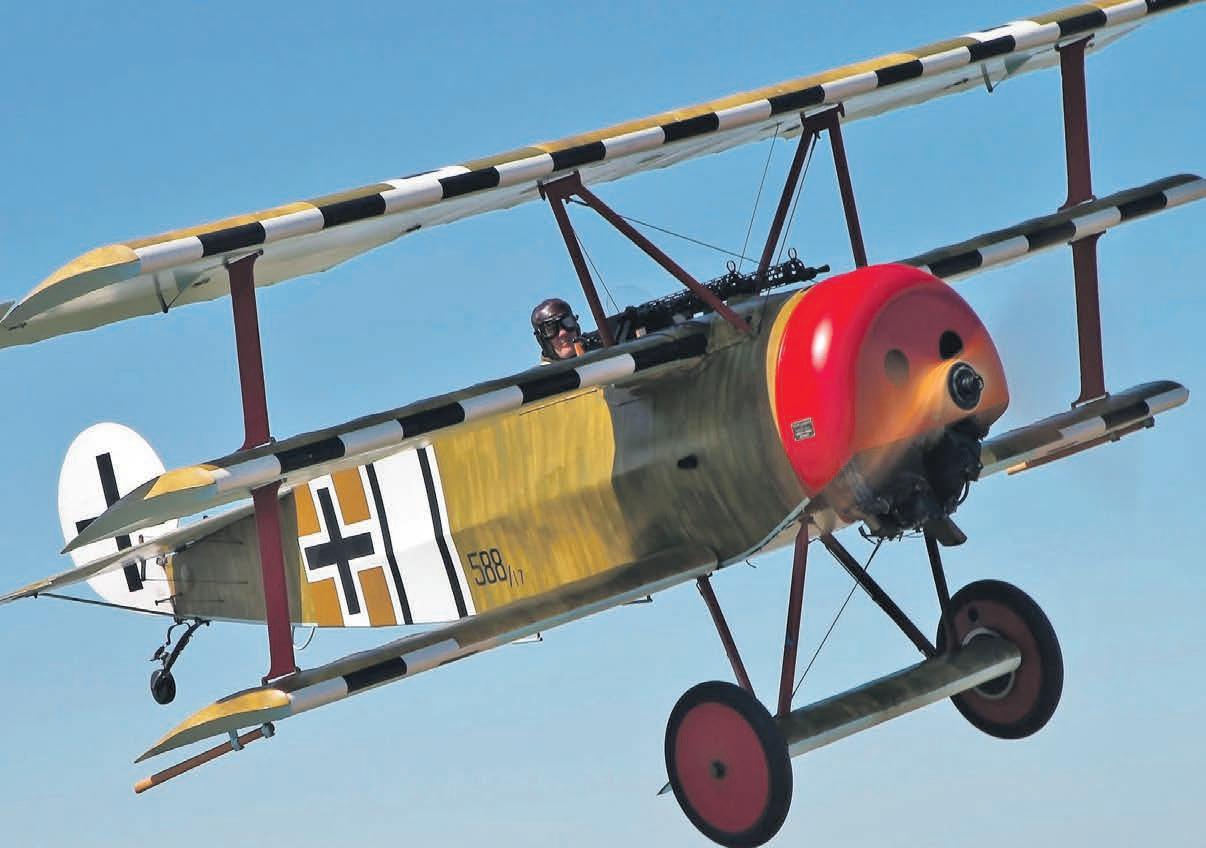
6 minute read
The Vintage Aviator
Fokker Triplane vs Sopwith Camel
Fokker Dr1 Triplane
Advertisement
Span: Span: 7.19m Length: Length: 5.77m Speed: Speed: 180km/h The Fokker Triplane is, today, the best known of Germany’s WWI ghters, thanks in part to Snoopy in the comic strip ‘Peanuts’. The Fokker Dr1 was in fact inspired by the British Sopwith Triplane, and the nimble Fokker was produced during 1917-18. Although the Dr1 was superior to Germany’s Albatros ghters, it was slower than many of the Allied ghters and its wing design made it prone to structural failure. Ultimately it was replaced by the Fokker D VII.
Fokker Triplane vs Sopwith Camel
In contrast the British Sopwith Camel served widely in both the RNAS and RFC. It became the most successful British ghter and over 5000 were built. It was however di cult to y and it killed many inexperienced pilots – but in the hands of the RFC veterans it proved deadly. At WOW 21 a Fokker Dr1 and a Camel will ght in mock-combat, while a Fokker DVII and two Sopwiths - a Pup and a Snipe - will also take part. The Sopwith Pup was the 1916 predecessor of the Camel, and the Snipe, with its powerful Bentley rotary engine, was in 1918 the successor to the Camel.
Sopwith Camel
Span: 8.53m Length: 5.72m Speed: 182km/h
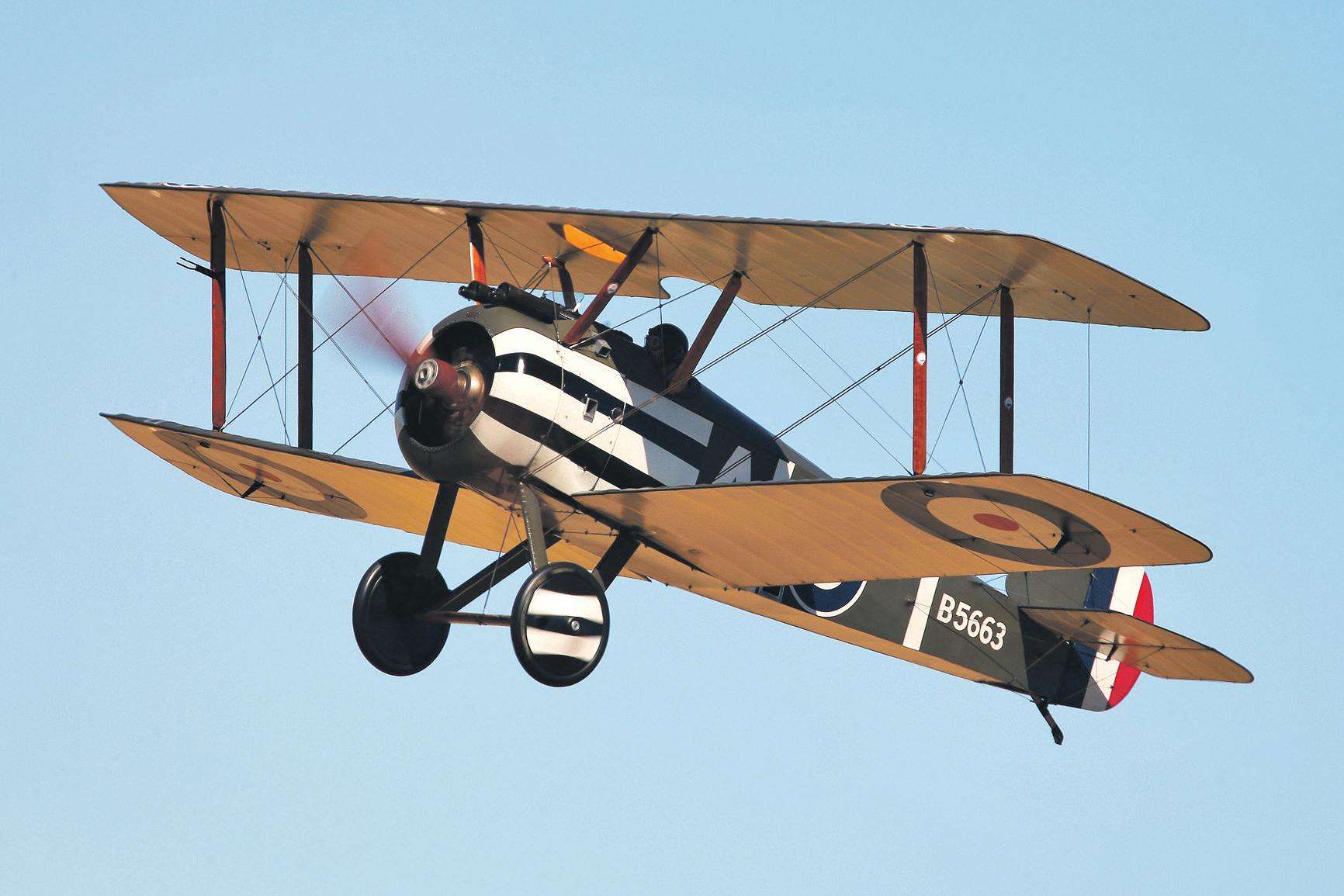
The German Fighters
Fokker DVII

The Fokker DVII was the best of the German ghters, but it did not enter service until May 1918. It made such an impression that the Allies speci ed in the Treaty of Versailles that all DVIIs should be surrendered to the allied powers. With a 200hp Mercedes in-line engine it was armed with two synchronised machine guns.
Span: 8.9m Length: 6.95m Speed: 189km/h

www.ticketek.co.nz 0800 842 538
The German Fighters
Germany’s Albatros company began building fighters in 1916 and their fighter series (D1 – DVa) became the mainstay of the Luftsteitkrafte.
Built with a plywood semimonocoque fuselage, they were perhaps the most streamlined aircraft of that era. Between 1916 and 1918 the Albatros company produced nearly 5000 fighters.

Span: Span: 8.5m Length: Length: 7.35m Speed: Speed: 170km/h
Albatros DVa

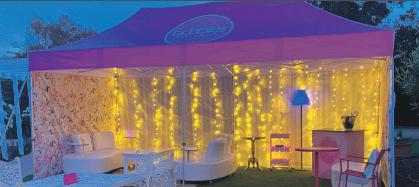
Relax & sample the fi ner things in life while enjoying the airshow from our VIP lounge or relax on bean bags in the enclosed garden
@mobilevintagelounge
Open to the general public Come visit our coolest executive lounges at Wings over Wairarapa
Relax on pink bean bags and enjoy the best eton mess and pink bubbles while taking in a great view of the airshow. Something for the ladies! Designer New Defi nition Brows. Lie back and put your feet up and have the best brow experience! @pinkbubblestent


SERVING EXPRESSO MARTINI AND CHARCUTERIE CONES
PINK BUBBLES AND ETON MESS
Reconnaissance and Artillery Spotting
Reconnaissance is vital in warfare and in 1914 aircraft proved ideal for that role. When the Western Front solidi ed into trench warfare, artillery spotting also proved vital. Because of their importance, reconnaissance and spotter aircraft quickly became priority targets for enemy ghters. The Royal Aircraft Factory’s designer, Geo rey de Havilland, designed the BE2 as a stable aeroplane, so that the observer could map read and operate his radio with some reliability. But stability was at the cost of manoeuvrability, so successive modi cations of the BE series and the related RE series were intended to improve each type. The BE2 rst ew in 1911 and the BE2c was in production when the War began. In 1915 it was the primary British aircraft in France, but soon fell victim to the ‘Fokker Scourge’ – Germany’s Fokker Eindecker with a synchronised forward ring machine gun. The BE2c was still in use over the Western Front in 1917 and was again a victim during ‘Bloody April’; by then the German Albatros ghters were dominant over the Front.
BE 2f
Span: Span: 11.3m Length: 8.3m Speed: Speed: 116km/h

Reconnaissance and Artillery Spotting
One was the BE2f which was in fact more stable and less manoeuvrable than the -2c version. But the main replacement was the RAF RE8, which was the primary artillery spotter for the remainder of the war. The Observer was behind the pilot and he had a Lewis machine gun. If own aggressively the RE8 could defend itself, and No.3 Sqn of the Australian Flying Corps shot down some 50 enemy aircraft over 12 months.
The single-seat BE12 was intended for long range reconnaissance, but lacking defensive armament proved a failure over the Western Front. However the type was more successful in the Middle East against Turkish forces. In contrast to the cumbersome BE series, the Bristol Aeroplane Company designed its F2B ghter as a manoeuvrable 2-seater, powered by the Rolls Royce Falcon. It entered service in France in April 1917 and after some losses soon proved its worth, being own like a single-seat ghter, but with the Observer able to ght o any enemy on their tail. The Bristol Fighter at WOW21 is an original, with the oldest ying Rolls Royce Falcon engine.
Bristol F2B
Span: Span: 11.96m Length: Length: 7.87m Speed: Speed: 198km/h
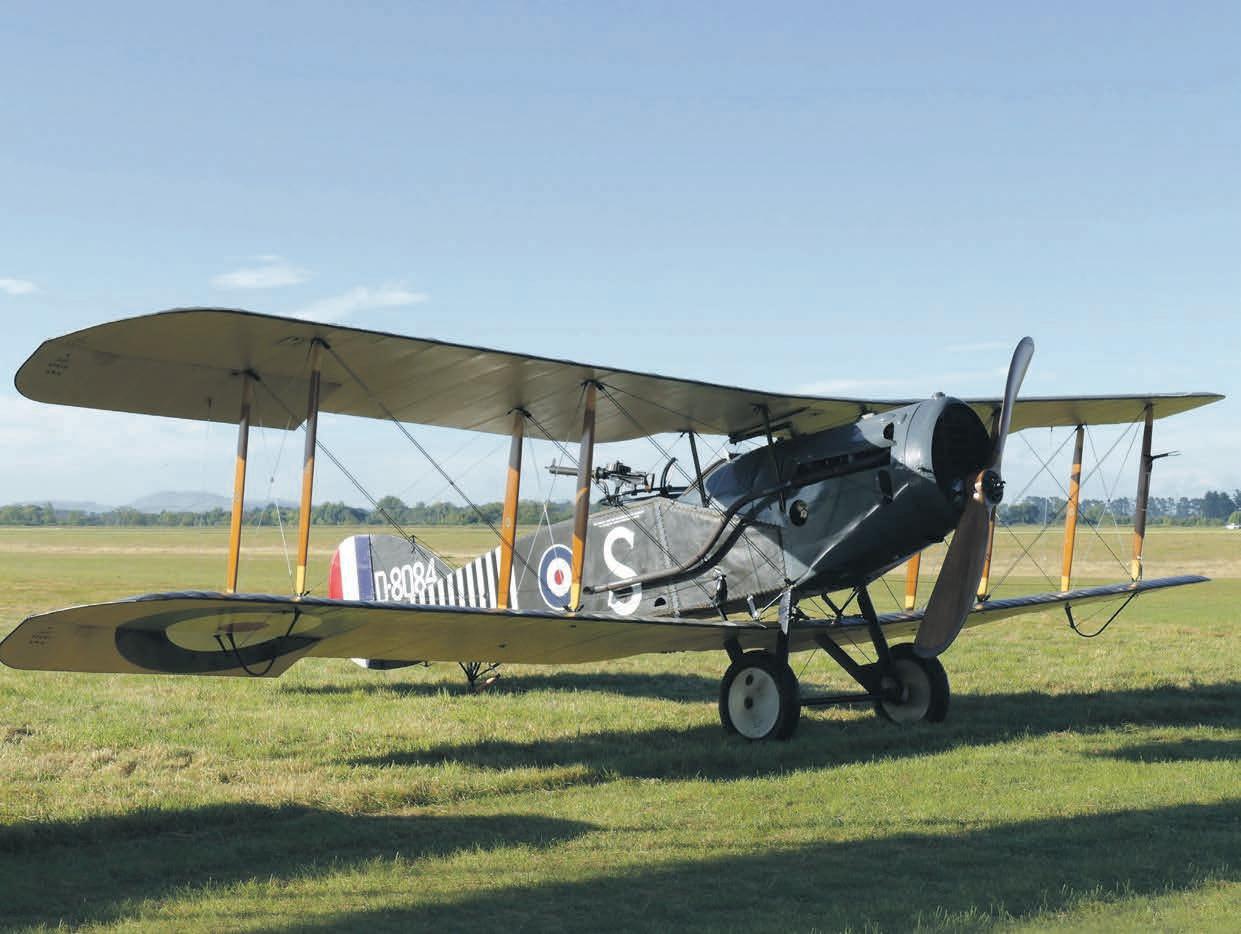
The American Bombers
DH 4 light bomber
The DH 4 light bomber was designed in Britain and when the USA entered the war they ordered 10,000 from US factories, using the powerful Liberty engine instead of the Rolls Royce Eagle. It took nearly a year for US ground and air forces to be ready for combat in France, and by then over 1000 DH4s had been delivered to the US Army’s air service. TVAL’s DH4 is in the colours of No. 50 Aero Squadron and two of that squadron’s aircrew were awarded Medals of Honor for an heroic ight over German lines to nd the encircled ‘Lost Battalion’.
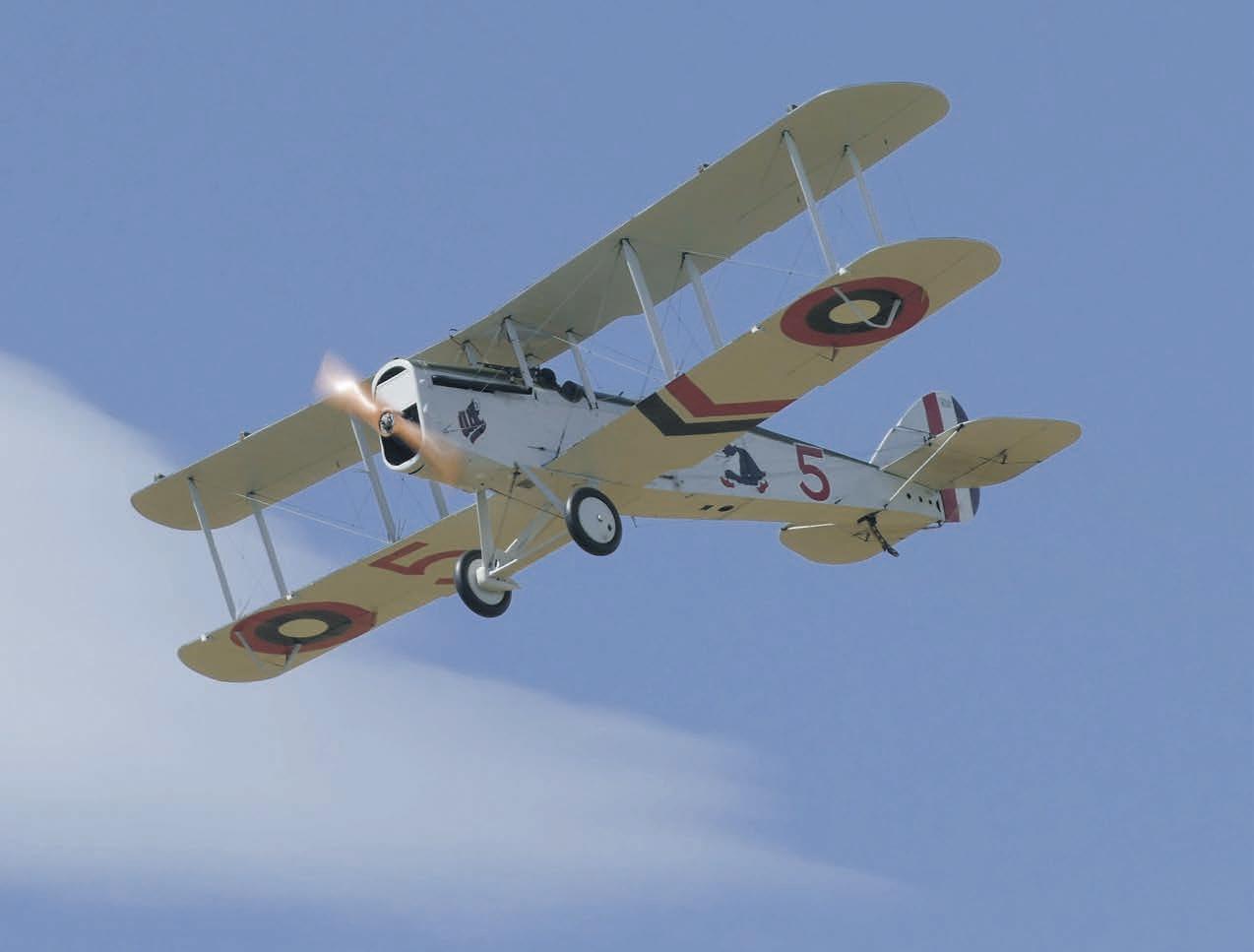
Post-war the DH4 was widely used as a mail plane and as a light passenger plane.
Span: Span: 13.2m Length: 9.35m Speed: Speed: 230km/h
THE SPITFIRE TRAIL
Aviation Tours NZ Explore the history of the iconic Spit re on this three week escorted tour to the UK

For July 2022 or when borders allow, expressions of interest to: melanie@aviationtoursnz.com | 021 076 8308 | www aviationtoursnz.com



World War II


The sight of some of the great combat aircraft of WWII features at Wings Over Wairarapa 2021.
The ‘heavy metal’ warbirds are favourites with their speed and power. The best memorial to the veterans of that world war is to maintain their aircraft in ying condition and to display them in their element – the air.
We are privileged that so many people here in New Zealand put so much into maintaining and displaying these aircraft.


